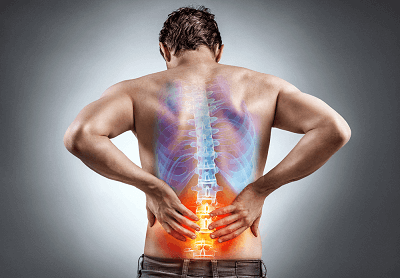Degenerative Disc Repair Using Stem Cells

In a paper published last month Ghosh, et al, described success in using mesenchymal precursor cells to treat disc degeneration in sheep.The stem cells for disc repair were injected in combination with hyaluronic acid in either a low or high dose into discs that had, some three months earlier, been deliberately damaged through injection of chondroitinase-ABC. The researchers used healthy lumbar discs and injections of hyaluronic acid alone as controls against the stem cell procedure and assessments were made three and six months later when the sheep were slaughtered and dissected. X-Rays and MRI scans were performed prior to the initiation of disc damage, three months afterwards, and just before killing the sheep.
Regeneration of Damaged Discs with Stem Cells
Results from the study showed that the injection of cABC decreased disc height by 45-50% and that some recovery after six months did occur in all cases. However, only those discs injected with the stem cells recovered to within baseline levels with corresponding improvements seen on MRI scans. The injection of mesenchymal precursor cells into damaged spinal discs led to regeneration of the extracellular matrix and restoration of disc height, likely improving symptoms of spinal stenosis such as back pain, numbness, weakness, and paraesthesia.
Mounting Evidence Supporting Stem Cells’ Use in Back Pain
It could be argued that testing stem cell therapy for disc repair in deliberately damaged discs is not an accurate way of predicting the results in human patients where discs have worn over time. Whilst it is true that the use of cABC in animal spines does not precisely reproduce the defects acquired over the course of a human’s lifetime the mechanical results are remarkably similar. Additionally, positive results were seen in an earlier study looking at the use of MPCs derived from bone marrow that were added to collagen sponges and implanted into the spine in the space left after partial discectomy in two women. Two years later and the women had better spinal stability and reduced symptoms, with improvement seen in MRI scans of the spine.
Which Stem Cells to Use for Disc Repair
The ages of the women in this small study (67 and 70) did call into question the viability of autogenous bone marrow-derived stem cells and the risks of an invasive stem cell harvesting procedure for patients with advanced age. An off-the-shelf allogeneic stem cell product to repair degenerative discs in the spine would be advantageous and more clinical trials in humans are likely on the basis of such results. Some clinics are already using stem cells for back pain from disc degeneration as an off-label use of regenerative medicine products.
Stem Cell Therapy – The Future for Back Surgery?
Age, genetics, and spine trauma throughout life all contribute to making degenerative disc disease a significant cause of low back pain and reductions in quality of life. The existing gap in treatment leaves millions in pain without relief from medications, physical therapy, or the prospect of back surgery. Results like these suggest that stem cell treatment for back pain from degenerative discs is a prime candidate for filling that treatment gap.





